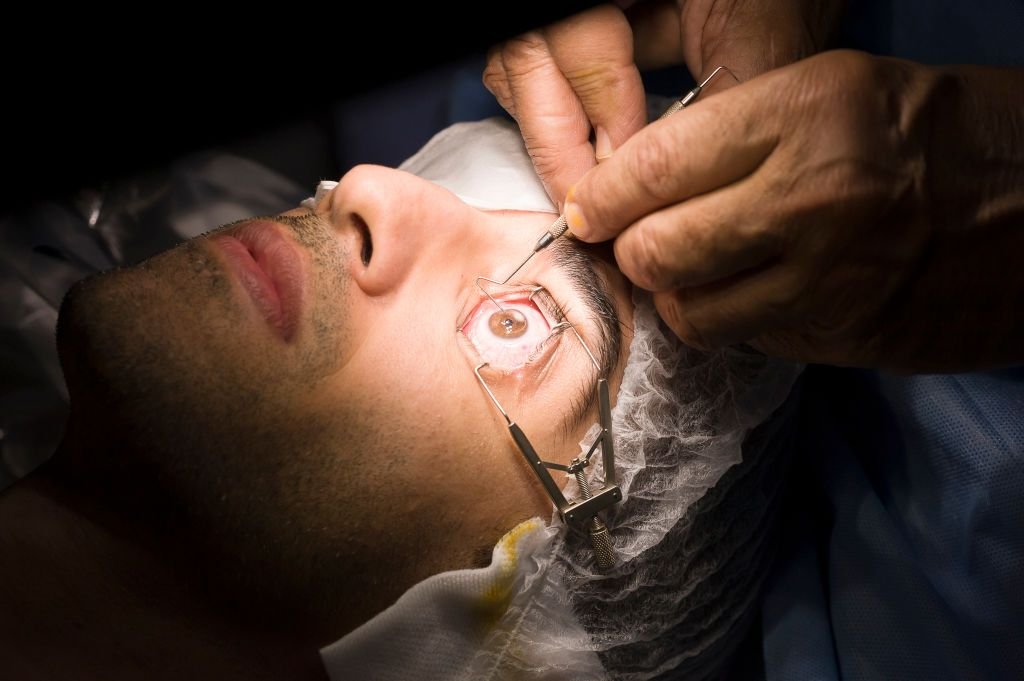A Thorough Consider the Different Eye Surgical Procedure Procedures Used by Knowledgeable Optometrist
In the realm of ophthalmology, the landscape of eye surgical treatment treatments provided by proficient optometrist is as varied as it is advanced. From the commonly recognized LASIK eye surgical procedure to the much less acquainted refractive lens exchange, each treatment holds the promise of vision improvement and enhancement. As people navigate the myriad alternatives readily available to them, recognizing the intricacies of these medical interventions becomes critical in making informed decisions about their eye health. The accuracy, modern technology, and proficiency behind these procedures introduce a remarkable world where science and art converge to redefine the opportunities of vision enhancement.
:max_bytes(150000):strip_icc()/laser_eye_surgery-a7551adb99784add9e388179cc68b3c7.jpg)
LASIK Eye Surgical Procedure
The precision of LASIK eye surgical treatment supplies patients a transformative remedy for vision modification offered by experienced ophthalmologist. LASIK, which represents Laser-Assisted Sitting Keratomileusis, is a preferred refractive surgical procedure that reshapes the cornea to resolve common vision problems such as nearsightedness, astigmatism, and farsightedness. This outpatient treatment utilizes an extremely specialized laser to exactly get rid of microscopic quantities of cells from the cornea, allowing for improved focusing power and clearer vision without the demand for glasses or contact lenses.
During the LASIK treatment, the eye cosmetic surgeon creates a slim flap on the cornea making use of a microkeratome or a femtosecond laser. With its high success price and fast recovery time, LASIK eye surgery has become a relied on method for attaining long lasting vision enhancement (Tallahassee Ophthalmologist).
PRK Treatment
A highly effective option to LASIK eye surgical procedure is the PRK procedure, understood for its effective results in vision correction. PRK, or Photorefractive Keratectomy, is a kind of refractive surgical treatment that reshapes the cornea to remedy refractive mistakes such as astigmatism, farsightedness, and nearsightedness.
Throughout the PRK treatment, the outer layer of the cornea, called the epithelium, is removed to access the underlying corneal cells. Unlike LASIK, which produces a flap in the cornea, PRK directly reshapes the surface area of the cornea. Best Eye Doctor In Tallahassee. This makes PRK a suitable choice for individuals with slim corneas or various other corneal abnormalities that may stop them from going through LASIK
Complying with the removal of the epithelium, an excimer laser is used to sculpt the cornea to the desired shape, dealing with the refractive error. The epithelium regrows normally over a few days after the procedure. While the recuperation time for PRK is typically longer contrasted to LASIK, several patients attain excellent visual end results with this treatment. PRK is a effective and safe option for people looking for to minimize or eliminate their dependancy on restorative lenses.
Cataract Surgery
Cataract surgical treatment is a common treatment performed to eliminate the gloomy lens of the eye and change it with a clear fabricated lens. This surgical treatment is commonly done on an outpatient basis and is very successful in recovering vision. The cloudy lens, which is called a cataract, forms slowly and can trigger blurred vision, trouble seeing in the evening, and level of sensitivity to light.
During the cataract surgical treatment treatment, the ophthalmologist makes a tiny laceration in the eye and makes use of ultrasound modern technology to separate the over cast lens. The fragmented lens is after that gently suctioned out, and a fabricated intraocular lens (IOL) is inserted in its area. This IOL aids to focus light onto the retina, enhancing vision.
Patients undergoing cataract surgery are usually awake during the treatment, which typically lasts around 15-30 mins. Recovery time is relatively fast, with numerous people noticing enhanced vision within a couple of days. It is vital to comply with post-operative treatment guidelines supplied by the eye surgeon to make sure optimum recovery and vision end results.
Refractive Lens Exchange
Refractive Lens Exchange, also referred to as lens replacement surgical procedure, is a procedure that includes removing the eye's natural lens and replacing it with an artificial lens to remedy vision troubles. This medical technique is mainly made use of to deal with presbyopia, serious hyperopia (farsightedness), and various other refractive errors that can not be sufficiently resolved with typical methods like glasses or contact lenses. During the treatment, the all-natural lens is usually replaced with a costs intraocular lens (IOL) that can deal with refractive mistakes and, in some instances, even stop the growth of cataracts in the future. Refractive Lens Exchange is taken into consideration a secure and effective alternative for individuals seeking to reduce their dependence on rehabilitative eyeglasses and enhance their overall high quality of vision. By seeking advice from an experienced ophthalmologist, click now people can figure out if they are appropriate candidates for this type of surgery and go over the prospective advantages and dangers related to the procedure.
Corneal Transplant
Having addressed refractive errors via treatments like lens replacement surgical treatment, knowledgeable eye doctors also use corneal transplants as a service for certain eye problems. A corneal transplant, also called corneal grafting, includes changing a damaged or diseased cornea with a healthy and balanced donor cornea to boost vision. This treatment is typically suggested for people with conditions such as keratoconus, corneal scarring, corneal ulcers, or corneal thinning.
During a corneal transplant, the sensory cosmetic surgeon gets rid of the main section of the damaged cornea and replaces it with a donor cornea that is thoroughly matched for dimension and form. There are different types of corneal transplants, including penetrating keratoplasty, where the whole thickness of the cornea is replaced, and partial thickness transplants like Descemet's removing automatic endothelial keratoplasty (DSAEK) or Descemet's membrane layer endothelial keratoplasty (DMEK), which change just the inner layers of the cornea.

Final Thought

In the world of ophthalmology, the landscape of eye surgical treatment procedures provided by skilled eye doctors is as varied as it is advanced.The accuracy of LASIK eye surgical procedure provides individuals a transformative remedy for vision correction supplied by experienced eye medical professionals.Refractive Lens Exchange, likewise recognized as lens replacement surgical treatment, is a procedure that entails eliminating the eye's all-natural lens and replacing it with an artificial lens to remedy vision problems.Having resolved refractive mistakes with procedures like lens replacement surgical procedure, skilled eye physicians also supply corneal transplants as an option for certain eye conditions.In conclusion, Continued skilled eye doctors offer a selection of eye surgery treatments including LASIK, PRK, cataract surgery, refractive lens exchange, and corneal transplant.